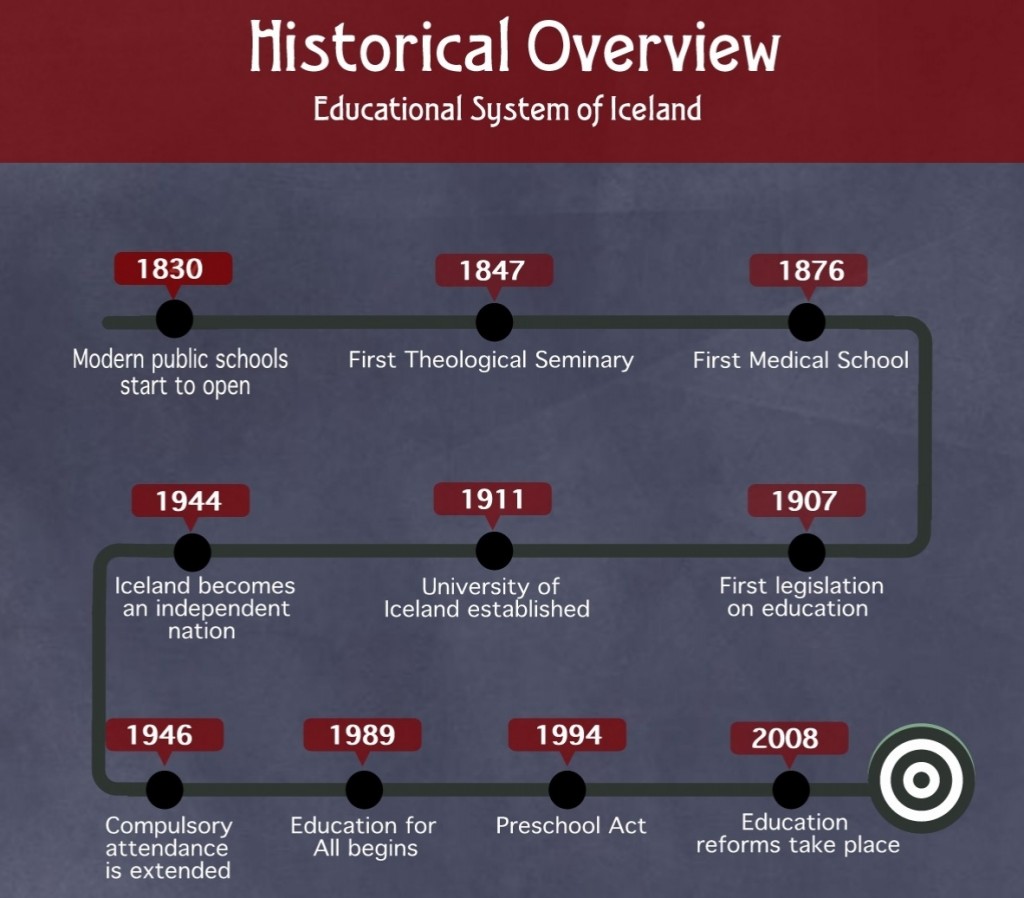The history of education in Iceland starts in 1830 when schools first started to open throughout the country. As the school system was being introduced, many of its roots resembled and grew from other Nordic country’s education systems.
In 1847, higher education began with the opening of a Theological Seminary and then a Medical School in 1876. Although not noted above, a School of Law was opened in 1908, and all three schools combined in 1911 to create the University of Iceland (“Higher Education in Iceland”).
The reforms in 1907 brought forth the first legislation on public education. Children who lived in urban areas were now required to attend school, however, children in rural areas were still allowed to be taught at home (“History).
The country became independent of Denmark on June 17, 1944 (“History”).
1946, more education reforms took place and the compulsory level was extended from age six to sixteen (Bjarnadóttir).
In 1989, Iceland began the Education for All initiative through UNESCO. Since that time, the country has aimed to provide an inclusive, equal, and gender balanced system for its students, however, there are no schools for gifted children, and schools for children with learning or physical disabilities are rare (Sveinn Helgason).
Pre-school was considered the first level of the education system in 1994, with the initiation of the Pre-school Act. Although it was not (and is still not) compulsory, objectives for the curriculum were introduced (Mýrdal).
The education system was highly centralized until 1995 when the Basic School Act was put into affect. The government originally had control of compulsory and upper secondary schools, but with the introduction of the act, the system became decentralized and allowed municipal control of the schools, giving principals more room for direction. Other reforms with the Basic School Act included administering comprehensive examinations in grades 4, 7, and 10, creating parent councils, and a restructure of the entire curriculum system (Hansen et. al 105).
In 2008, laws regarding the pre-primary, primary and secondary (compulsory), upper secondary education levels, and teacher education were implemented to address the current curriculum and concerns within the system such as dropout rates (Gunnarsdóttir).



